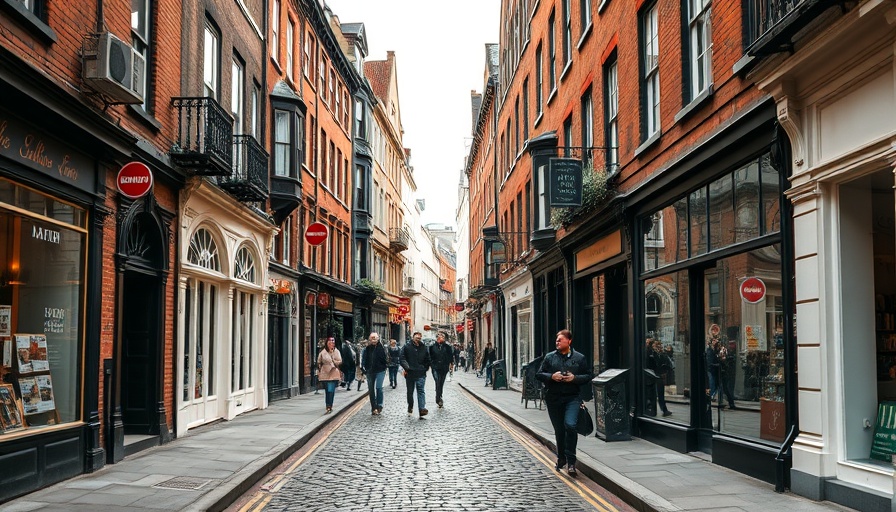
Discovering London's Hidden Gems: The Legacy of Little Compton Street
In the bustling heart of London, where modern life intertwines with the rich tapestry of history, lies one of the city’s best-kept secrets: Little Compton Street. While walking the lively roads of Soho, many may overlook the hidden historical remnants beneath their feet—namely, the signs of a long-lost street now resting just below ground level.
Little Compton Street, although destroyed in the 1890s, tells a story of a vibrant neighborhood that welcomed notable figures like French poets Paul Verlaine and Arthur Rimbaud, composer Richard Wagner, and even philosopher Karl Marx. Their presence in the area is a testament to the street's role as a cultural hub, marked by its famous pub, the Hibernia, located at its heart.
The Unseen Historical Significance of Old Compton Street
Old Compton Street today is known for its lively bars and cultural expressions. But if one were to gaze down through a metal grate situated at the junction of Charing Cross Road and Old Compton Street, they would see remnants of this historical street, including two Victorian signs—an intriguing sight that connects the present to London's past.
These signs were strategically placed not as mere decor but as practical reference points for workmen navigating the underground subway system built over a century ago. Positioned well below current street level, they act as a silent roadmap to the bustling life that once thrived above them.
Understanding the Evolution of Our Streets: How History Shapes Community
The transformation of this area, from a busy street in the 1790s to a now bustling commercial hub, illustrates how urban spaces can evolve while still honoring their historical roots. As young homeowners embark on renovations and improvements within their own spaces, understanding the stories embedded in a neighborhood is essential—these narratives add character and a deeper sense of belonging to homes and communities.
As residents engage with their surroundings, learning about these historical anecdotes can evoke pride and inspire creative projects—perhaps influencing interior design elements inspired by historical architecture or involving local artisans who celebrate the craftsmanship of the past.
The Importance of Preserving Local History in Modern Development
With the increasing push for modern infrastructure and development, it’s vital to balance growth with preservation. Educating ourselves about streets like Little Compton can influence how young homeowners approach sustainability—not just in their home improvements but also in supporting local history and culture that may otherwise be lost.
By participating in local initiatives, supporting local businesses, and advocating for the preservation of historical sites, young homeowners can play a pivotal role in shaping the future of their neighborhoods while honoring the past.
Spotlight on Sustainability: An Eco-Friendly Approach to Renovation
As the community strives for sustainable living, understanding the heritage of the spaces we inhabit becomes a key factor. The principles of sustainable renovation align beautifully with the notion of preserving history; using reclaimed materials, for example, not only minimizes environmental impact but also pays homage to the aged structures that once stood, encouraging a mindful approach to alterations.
What Lies Beneath: Why Local Secrets Matter
The allure of uncovering hidden spots like Little Compton Street reveals how local knowledge can enhance our everyday experiences and home projects. Residents inspired by discovering historical anecdotes are more likely to engage with their community, share stories, and create environments that reflect collective heritage—all strong contributors to a sense of pride and identity in a rapidly changing city.
As London continues to evolve, let us remember that while we modernize, it’s equally important to honor the stories that make our community unique. So, the next time you stroll through Soho, give a moment to the gratings beneath your feet and consider the history quietly lying just out of sight.
Next time you explore Soho, take a moment to peek through these grates. Who knows what other secrets of London's vibrant history await your discovery?
 Add Row
Add Row  Add
Add 




Write A Comment